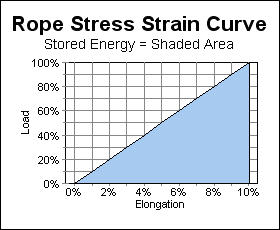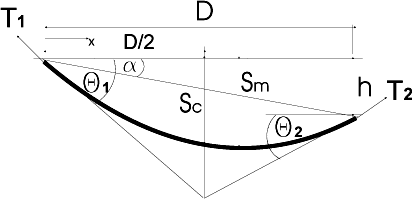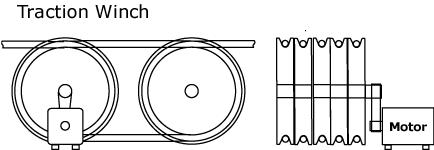Application Formulae
In this section of the website we provide commonly used formulae for a number of rope applications.
The units used in this section are:δl = Rope Elongation (m) E.A = Modulus of Elasticty * Area (N) εb = Rope Elongation at Break (%) h = Distance of Fall to End of Unelongated Rope (m) K = Spring Constant (N/m) KE = Kinetic Energy (J) l = Rope Length (m) m = Mass of Load (kg) PE = Potential Energy (J) SE = Stored Energy (J) T = Tension in Rope (N) w = Rope Weight (kg/m) Energy
Absorbed Energy
Ropes have to absorb energy if they are to arrest a falling object or prevent an errant vessel from colliding with sensitive equipment. In general the absorbed energy due the rope elongating has to equal the potential or kinetic energy.
Absorbed Energy is the Area Under the Rope Stress Strain Curve

Falling Load (Straight Line Approximation)



Absorbing Kinetic Energy (e.g. Moving Ship)


Rope Motion
Ropes have three characteristic motions. Often the engineer is interested in the ropes behaviour as a spring and sometimes the strumming frequency. For the sake of completeness the rope as a pendulum is also given.Pendulum

Spring


Strumming (Violin String)

Sag
Overheads lines are subject to considerable sag and this determines the height of pylons. In most overhead line analysis the following parabolic approximations are used.
The units used in this section are:
S = Maximum (Centre) Sag (m)
t = Horizontal Component of Rope Tension (N)
W = Rope Weight (N/m)
Where x = horizontal position along D
Where θ0 = Angle at supportLevel Span

where

Deflection at any point


Rope length




Inclined Span












Winching
Ropes lose tension over a pulley or winch and this is limited by the following equation. For a traction winch to work, it is necessary to ensure that the low tension is at least as high as the given in this equation. If it falls below this value the rope will simply slip on the winch.

Coefficient of Friction on a Traction Winch

where:
T1 = High Tension
T2 = Low Tension
µ = Coefficient of Friction
α = Wrap Angle in Radians
Application Formulae
YOU ARE IN TOOLS & GUIDES

/NQA-ISO-9001-Logo-UKAS.jpg)
/NQA-ISO-45001-Logo-UKAS.jpg)
